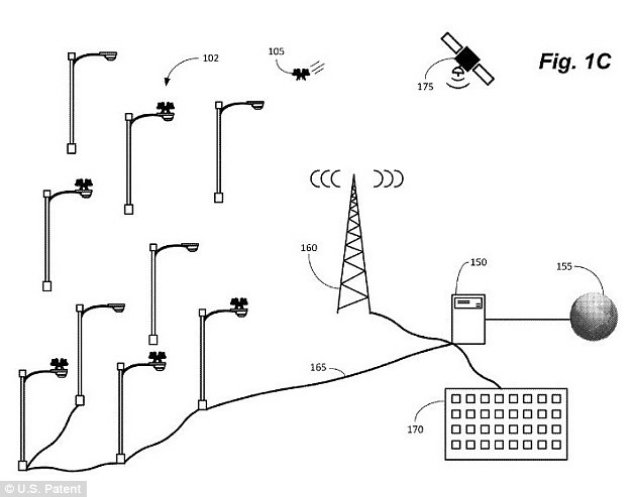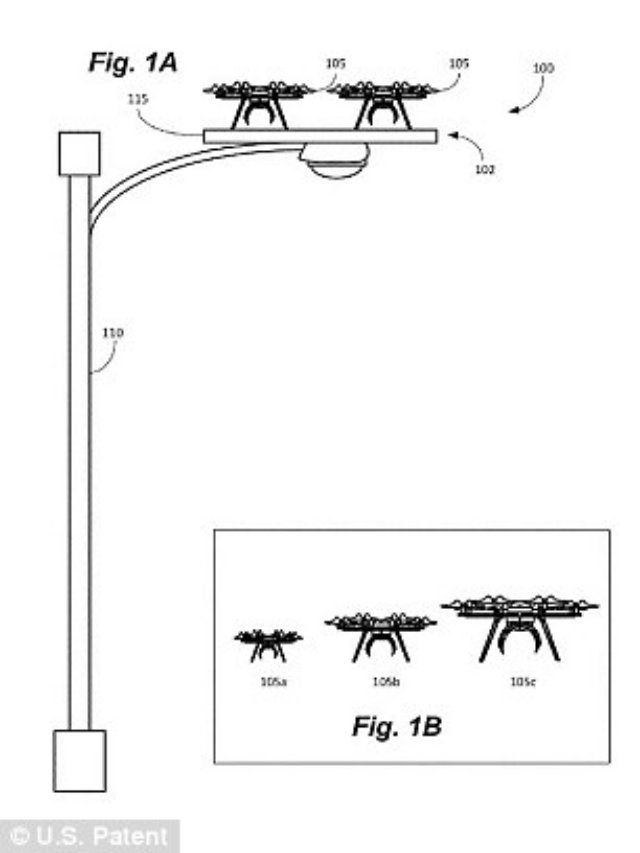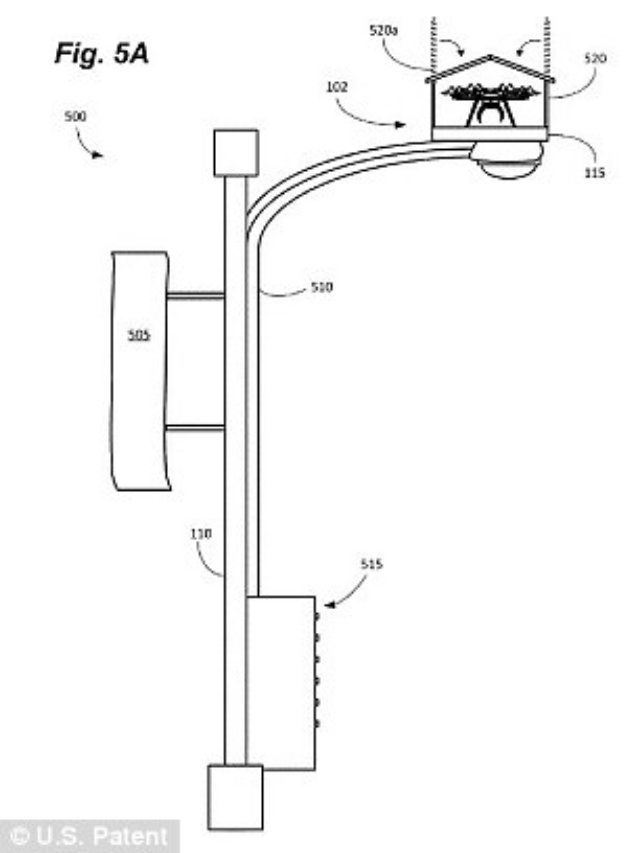The United States Patent Office issued Amazon with a multi-use UAV docking system patent last week. US patent number 9387928, filed by Amazon in December of 2014, provides an interesting insight into Amazon Prime Air’s thinking regarding potential delivery drone infrastructure in urban areas.
The patent’s abstract gives a good summary of the purpose and functionality of these docking stations:
Systems and methods for providing a series of multi-use UAV docking stations are disclosed. The docking stations can be networked with a central control and plurality of UAVs. The docking stations can include a number of services to facilitate both UAV guidance and maintenance and community acceptance and benefits. The docking stations can include package handling facilities and can act as a final destination or as a delivery hub. The docking stations can extend the range of UAVs by providing recharging/refuelling stations for the UAVs. The docking stations can also include navigational aid to guide the UAVs to the docking stations and to provide routing information from the central control. The docking stations can be incorporated into existing structures such as cell towers, light and power poles, and buildings. The docking stations can also comprise standalone structures to provide additional services to under served areas.
The newly awarded patent that describes using tall structures such as lamp posts or churches that would allow the drones to recharge and continue on their route.
‘The docking stations may incorporate a number of features to enable UAVs (unmanned aerial vehicles) to fly longer routes, to fly routes more accurately, and to provide shelter during adverse conditions,’ reads the application published by U.S. Patent and Trademark Office.
The new patent, called ‘Multi-use UAV Docking Station Systems and Methods’, was filed in December 2014 and explains the use of docking stations that will allow drones to fly longer routes, more accurately and provide the system with shelter during rough weather conditions.
Images in the patent depict one of Amazon’s docking stations on top of a traditional streetlight, however the firm explains that there is arrange of structures that can be used.
‘The system could also be installed on other existing structures such as cell towers, church steeples, office buildings, parking decks, radio towers, telephone/electrical poles and other vertical structures,’ reads the application.
‘This can enable the UAVs to, for example, avoid bad weather, recharge/refuel, drop off packages, pick-up packages, communicate with a certain control system, reset navigation systems and await further instructions’.
Amazon does give more detail regarding its concept of a ‘central control system’, which would communicate with docking stations with either a wired or wireless connection.
For the possibility of using batteries, the patent describes the drone landing directly on the recharging station, drop off the drained battery and pick-up a charged one.
The same process would be implemented if fuel is used – the drone drops off empty tank and picks up a full unit.
Amazon’s cutting-edge docking systems could also accommodate more than one drone and use solar power to recharge the technology. But another option would be to implement the method of the Pony Express. Drones would meet one another to hand-off packages and the fully-charged drone would take it closer to the final destination. But how far each UAV goes just depends on how much the package weighs.
The current prototype for Prime air can carry 5 pounds, as it weighs 55 pounds itself.
These drones are able to travel just under 400 feet and use sense and avoid technology to maneuver around obstacles in its path.
Although customers would enjoy the site of a drone dropping a package on its doorstep, the patent does not suggest it will happen.
The patent describes describe using ‘a vacuum tube, dumbwaiter, elevator, or conveyor to transfer the package from the platform to the ground level without damage’.
And although the stations main purpose would be for its own drones, it graciously suggests allowing the surrounding area to reap the benefits.
Source: Daily Mail



